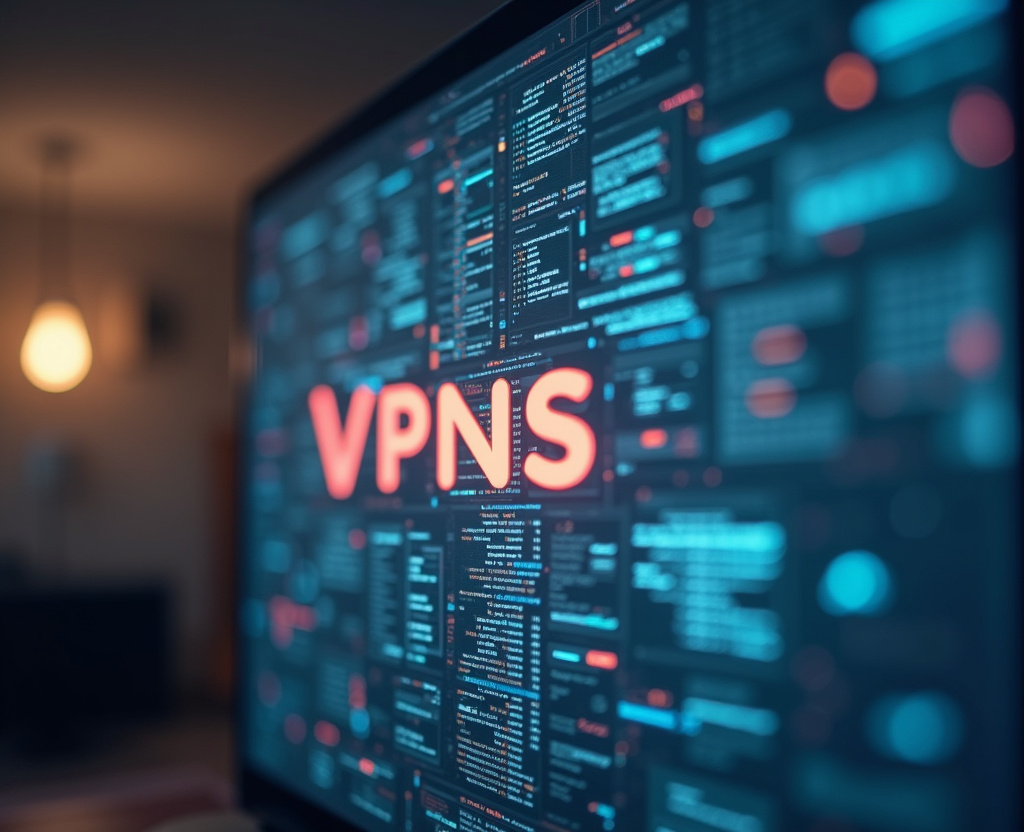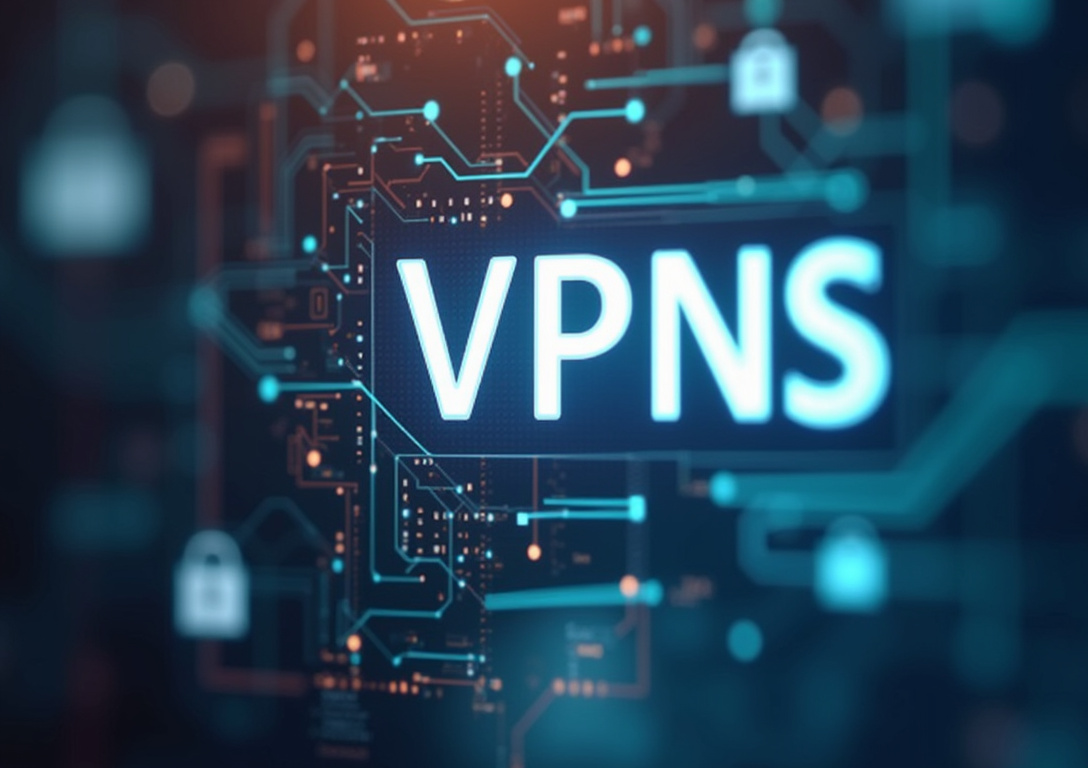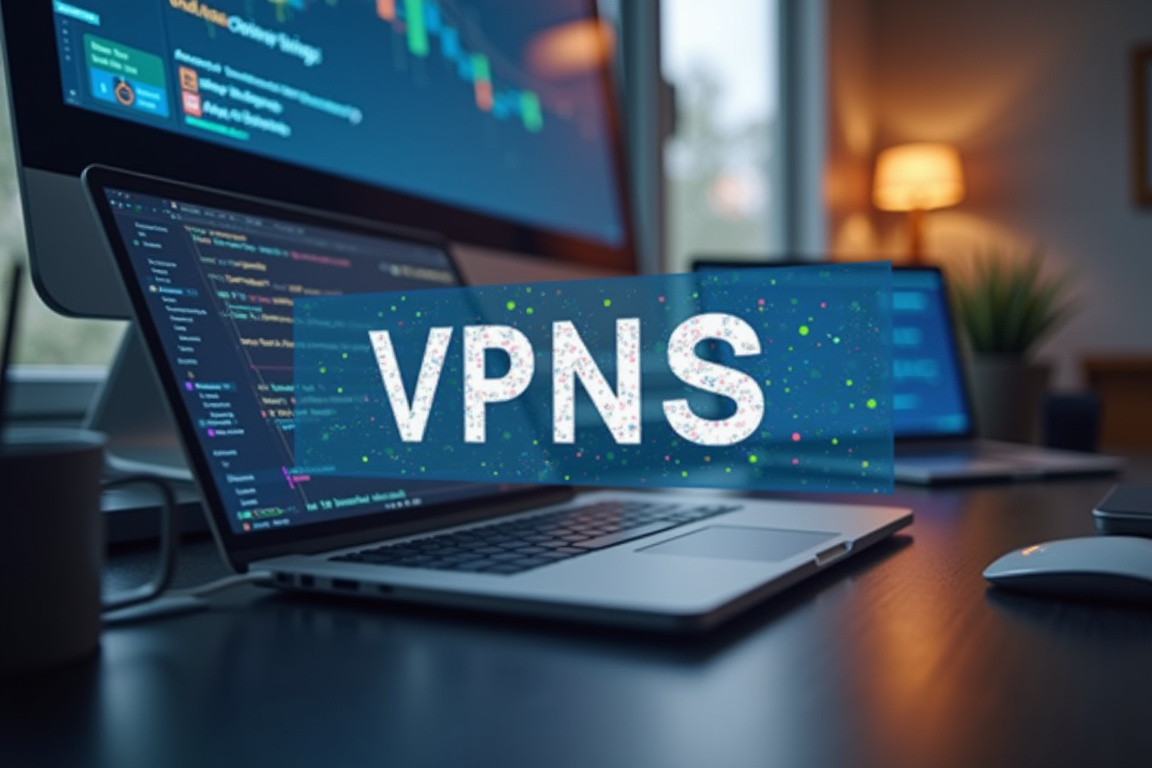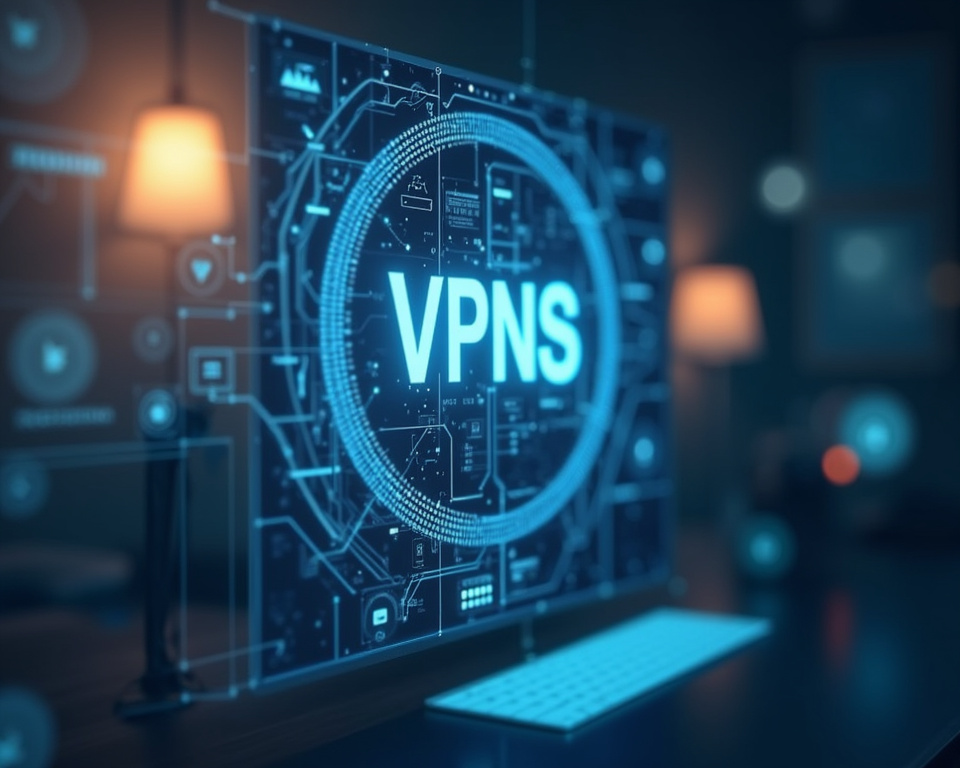VPNs for Home Automation: Securing Smart Home Devices

Table of Contents
household data
The rise of smart home technology has ushered in an era of unprecedented convenience and control, transforming our living spaces into interconnected ecosystems. From intelligent lighting systems that adapt to our moods to automated security systems that monitor our homes around the clock, the possibilities seem endless. Yet, this seamless integration of technology into our daily lives introduces a new frontier of security challenges.
Each smart device, while offering convenience, presents a potential entry point for malicious actors seeking to compromise our privacy, steal sensitive information, or even gain physical access to our homes. The interconnected nature of these devices means that a single vulnerability can expose the entire network, putting our at risk. Therefore, ensuring robust is no longer a luxury but a fundamental necessity for anyone embracing the smart home revolution.
A emerges as a critical component in this security strategy. It provides a vital layer of , safeguarding our connected devices and the sensitive information they transmit. A , unlike traditional security measures that focus on perimeter defense, operates at the network level, creating a secure, encrypted tunnel for all data traffic flowing between our smart devices and the internet.
This article aims to explore the critical role of VPNs in securing smart home environments. We will delve into the specific threats targeting smart devices, examining the vulnerabilities that make them attractive targets for cybercriminals. We'll discuss the importance of encryption in protecting and the benefits of masking IP addresses to prevent location tracking and targeted attacks.
Furthermore, we will explore the various VPN protocols suitable for home automation, comparing their strengths and weaknesses to help you choose the best option for your needs. The discussion will cover key considerations for selecting a VPN service, including security features, performance, compatibility, and ease of use. Setting up and configuring a can seem daunting, but we'll break down the process into manageable steps, providing practical guidance and troubleshooting tips.
We will also emphasize ongoing maintenance and best practices for ensuring long-term . Ignoring the security implications of smart home technology would be a grave oversight, potentially exposing ourselves and our families to significant risks. The convenience of controlling our homes remotely should not come at the expense of our privacy and security.
The ever-increasing sophistication of cyberattacks demands a proactive and multi-layered approach to security. A VPN provides a crucial line of defense, but it's not a silver bullet. It's essential to combine a with other security best practices, such as strong passwords, regular software updates, and network segmentation.
By understanding the threats, implementing appropriate security measures, and staying informed about the latest vulnerabilities, we can create a fortified and trustworthy smart home environment. This allows us to enjoy the benefits of smart technology with greater confidence and peace of mind, knowing that our and devices are well protected. The core purpose of using a VPN in this context is to establish a secure and private connection for all your smart home devices, making it exceedingly difficult for unauthorized individuals to intercept your communications or pinpoint your location.
With a properly configured , you can effectively create a shielded enclave for your smart home traffic, dramatically enhancing . As the number of connected devices within our residences continues its inexorable rise, the imperative for such robust protection intensifies. Safeguarding our homes, ensuring their security and privacy, and enabling a more secure and connected future for users becomes paramount.
Take proactive control of your today. Bolster your defenses with a to provide the highest level of and gain invaluable peace of mind, being on the right path to preserve the integrity of your household data.
smart home security
The Internet of Things (IoT) has exploded in recent years, populating our homes with a diverse array of smart devices designed to simplify and automate countless aspects of our lives. From smart thermostats that learn our temperature preferences to sophisticated lighting systems we can control with our voices, from security cameras offering remote surveillance to voice-activated assistants organizing schedules, these devices promised to make our lives easier and more efficient. However, this surge in connectivity has also introduced a significant expansion of the attack surface, creating new vulnerabilities that cybercriminals are eager to exploit.
Many smart home devices are designed with minimal security considerations, prioritizing functionality and affordability over robust protection against cyber threats. This often results in devices with weak default passwords, outdated software, and unencrypted communication protocols, making them easy targets for hackers. These vulnerabilities can be exploited to gain unauthorized access to your home network, allowing attackers to steal personal information, eavesdrop on your conversations, or even control your devices remotely.
Imagine a scenario where a hacker gains control of your smart security camera, allowing them to monitor your home's interior and exterior. Or picture a situation where an attacker hijacks your smart lock, granting them physical access to your property. These scenarios, while alarming, are entirely plausible given the current state of .
The risks extend beyond privacy invasion and physical security. Compromised smart devices can also be used as botnets to launch Distributed Denial-of-Service (DDoS) attacks, overwhelming targeted websites and services with malicious traffic. This can disrupt internet access for other users and even cause significant financial damage.
The information collected by smart devices, such as your location data, usage patterns, and personal preferences, can be incredibly valuable to advertisers and data brokers. This raises serious concerns about data privacy and the potential for misuse of your sensitive . Without adequate protection, your smart home devices could be constantly collecting and transmitting information about your daily routines, habits, and interactions, unknowingly contributing to a vast and ever-growing surveillance network.
This data can be used for targeted advertising, price discrimination, or even manipulated to influence your behavior. A offers a proactive solution to mitigate these risks by establishing a secure, encrypted connection for all your smart home devices. This encrypted tunnel effectively shields your from eavesdropping, preventing hackers from intercepting sensitive information as it travels between your devices and the internet.
By masking your IP address, a VPN also makes it significantly harder for attackers to identify your location and target your network with malicious attacks. Think of a as a reliable gatekeeper, meticulously filtering all incoming and outgoing traffic to and from your smart devices, ensuring that only authorized connections are permitted. This comprehensive is paramount in today's hyper-connected world, where the potential for cyberattacks is constantly increasing.
Implementing a VPN isn't just about protecting individual devices; it's about fortifying your entire home network. It prevents attackers from leveraging a compromised device as a launchpad to access other sensitive systems, such as your computers, smartphones, and financial accounts. By deploying a , you're taking a proactive step to safeguard your digital life and protect your family from the escalating threats in the smart home landscape.
This translates to an investment in your peace of mind. You can rest easy, safe in the knowledge that your and devices are shielded from prying eyes, resulting in a moresecure smart home experience. VPN becomes a fundamental pillar to enhance the overall .
Furthermore, a well-configured strategy through a trusted vendor acts as a deterrent, discouraging less sophisticated attackers who prefer easier targets. It also buys you valuable time to detect and respond to more advanced threats. In conclusion, neglecting the security of your smart home is akin to leaving your front door unlocked, inviting potential intruders to wreak havoc.
A is not just an optional add-on; it's an essential component of a comprehensive security strategy for any smart home environment.
smart home security
Choosing the right VPN protocol is paramount for ensuring robust . Different protocols offer varying levels of security, speed, and compatibility, making it essential to understand their nuances before making a decision. OpenVPN has consistently been lauded as one of the most secure and reliable VPN protocols available.
Its open-source nature means that its code is publicly accessible, inviting scrutiny from security experts worldwide. This transparency fosters continuous improvement and helps identify and address potential vulnerabilities promptly. OpenVPN boasts strong encryption algorithms, providing robust protection against eavesdropping and data interception.
Moreover, its flexible configuration options make it adaptable to diverse devices and network environments, catering to a wide array of smart home setups. However, the power and flexibility of OpenVPN come with a trade-off: it can be more challenging to set up and configure compared to some other protocols. Requires manual setup and third party tools when setting up on a router.
For less tech-savvy individuals, the initial configuration process might seem daunting, potentially requiring some technical expertise or guidance. WireGuard, a relatively newer VPN protocol, has rapidly gained popularity for its speed, simplicity, and strong security. Designed with state-of-the-art cryptography, WireGuard aims to provide a more streamlined and efficient VPN experience compared to traditional protocols like OpenVPN.
Its design minimizes overhead, resulting in faster connection speeds and reduced battery consumption on mobile devices, making it an excellent choice for bandwidth-intensive smart home applications like video streaming and remote surveillance. A key advantage of WireGuard lies in its simplicity. Its code base is significantly smaller than OpenVPN's, making it easier to audit and maintain.
Configuration is also generally simpler, making it accessible to a wider range of users, including those with limited technical expertise. However, as a relatively new protocol, WireGuard is still undergoing active development and scrutiny. While its security claims are promising, it's essential to stay informed about the latest security assessments and updates.
IPSec/IKEv2 stands as another widely deployed VPN protocol that provides a solid balance between security and performance. Often deployed in enterprise environments, IPSec/IKEv2 offers robust encryption and secure key exchange mechanisms. It is known for its stability and compatibility with a wide range of devices and operating systems, making it a viable option for securing smart home networks.
However, IPSec/IKEv2 can be more complex to configure compared to WireGuard and may require specialized client software on some devices. Beyond protocol selection, choosing the right encryption cipher is also crucial. AES (Advanced Encryption Standard) with a key size of 256 bits is widely regarded as the gold standard for encryption, providing strong protection against brute-force attacks.
Ensure that your chosen VPN protocol and implementation support AES-256 encryption. Another factor to consider is Perfect Forward Secrecy (PFS). PFS ensures that even if the encryption keys are compromised in the future, past communications will remain secure.
Protocols like OpenVPN and WireGuard offer PFS through the use of ephemeral keys, which are generated for each session and discarded afterward. When selecting a , compatibility with your smart home devices is paramount. Ensure that the VPN solution supports the operating systems and platforms used by your devices.
Some smart devices may require specific VPN client apps or configurations. Therefore, be sure a through check should be done before deployment, considering that the main goal is to reinforce the . In addition to compatibility, performance is often neglected for .
The VPN should provide sufficient bandwidth and low latency to support the demands of your connected home. High-resolution video streaming, online gaming, and remote control applications require fast and reliable connections. Test the VPN's performance with your specific devices and applications before committing to a long-term subscription.
Ultimately, the choice of a , lies with the needs and technological capabilities of a home owner. Therefore, consider the technical skills available for setting it up.
device protection
Securing your smart home with a VPN involves several crucial steps, from selecting a suitable VPN service to configuring your network and devices. Before diving into the technical details, it's essential to outline your security goals and assess your existing network infrastructure. Identify the smart devices you want to protect, the types of data they transmit, and the potential threats they face.
This assessment will help you determine the appropriate level of security and the specific features you need from a VPN service. Selecting a reputable and trustworthy VPN service is paramount. Look for providers with a proven track record of security, privacy, and performance.
Read reviews, compare features, and pay close attention to the provider's logging policy. A strict no-logs policy ensures that the VPN service does not store any information about your online activities, providing an extra layer of privacy. Consider providers that publicly disclose their security practices and undergo independent security audits to verify their claims, making sure they are actually a service.
Most VPN services offer client applications for various operating systems, including Windows, macOS, Android, and iOS. Install the appropriate VPN client on your computers, smartphones, and tablets. These apps typically provide a user-friendly interface for connecting to the VPN server and managing your VPN settings.
Some smart home devices, such as routers and network-attached storage (NAS) devices, may support built-in VPN server functionality. If your router supports VPN server, you can configure it to act as your own personal VPN server, allowing you to securely access your home network from anywhere in the world. This option provides more control over your VPN setup but requires some technical expertise.
If your smart devices do not support VPN client software, you can configure your router to act as a VPN gateway, routing all traffic from your home network through the VPN. This approach protects all devices connected to your network, including those that do not have VPN client capabilities. However, configuring a router as a VPN gateway can be technically challenging and may require flashing custom firmware.
Once you have installed the VPN client or configured your router as a VPN gateway, you need to connect to a VPN server. Choose a server location that is geographically close to you to minimize latency and maximize performance. Ensure that the VPN connection is active before using your smart home devices.
Most VPN clients display a notification or icon indicating the VPN connection status, this should be cross-checked to make sure that the is optimal. Regularly monitor your VPN connection to ensure that it remains active and stable. Some VPN clients offer features such as automatic reconnection and kill switch, which can help prevent data leaks if the VPN connection drops unexpectedly.
Employ strong, unique passwords for all your smart home devices and accounts. Avoid using default passwords or easily guessable passwords. Enable two-factor authentication (2FA) whenever possible to add an extra layer of security.
Regularly update the firmware and software on your smart home devices to patch security vulnerabilities. Many manufacturers release security updates to address known issues, so it's essential to keep your devices up to date, this secures your . Segment your smart home network to isolate sensitive devices from less critical ones.
This can prevent attackers from gaining access to your entire network if one device is compromised. Consider using a separate Wi-Fi network for your smart home devices or creating VLANs (Virtual Local Area Networks) to logically segment your network, thus improving your VPN for homes. Regularly review your smart home security settings and practices.
Stay informed about the latest security threats and vulnerabilities and adjust your security measures accordingly. Consider using a security scanner to identify potential vulnerabilities in your network and devices. By following these steps, you can significantly enhance the security of your smart home and protect your privacy and data, making the even better with a that reinforces the and keeps your safe .
smart home security
Maintaining a secure smart home environment is an ongoing process that requires constant vigilance and proactive measures. Implementing a VPN is a crucial first step, but it's not a one-time fix. Regular monitoring, updates, and adherence to best practices are essential for ensuring long-term .
Continuously monitor your network traffic for suspicious activity. Many routers and firewalls offer logging capabilities that can help you identify unusual patterns or unauthorized access attempts. Regularly review these logs to detect and respond to potential security incidents and breaches.
Configure alerts to notify you of suspicious activity, such as unauthorized login attempts, unusual network traffic, or changes to device settings. These alerts can help you quickly identify and respond to security incidents before they cause significant damage, all the while securing your . Keep your VPN client software and router firmware up to date.
VPN providers and router manufacturers regularly release updates to address security vulnerabilities and improve performance. Install these updates promptly to ensure that your devices are protected against the latest threats. Regularly review your VPN settings and configuration to ensure that they are still optimal for your needs.
As your smart home environment evolves, your security requirements may change. Adjust your VPN settings accordingly to maintain a high level of security. Be mindful of the information you share with your smart home devices.
Limit the amount of personal information you provide and be cautious about granting permissions to access your location, contacts, or other sensitive data. Review the privacy policies of your smart home device manufacturers to understand how they collect, use, and share your data. Advocate for stronger privacy protections and support manufacturers that prioritize user privacy.
Educate yourself and your family about smart home security best practices. Teach them how to recognize phishing attempts, avoid suspicious links, and use strong passwords. Emphasize the importance of keeping their devices secure and protecting their personal information.
Stay informed about the latest security threats and vulnerabilities affecting smart home devices. Subscribe to security blogs, newsletters, and social media accounts to stay up-to-date on the latest news and trends. Participate in online forums and communities to share your experiences, ask questions, and learn from others.
The smart home landscape is constantly evolving, so it's essential to continuously learn and adapt to new security challenges. Regarding , stay informed on new ways of setting up and using a new . Conduct regular security audits of your smart home network.
Use a security scanner to identify potential vulnerabilities in your devices and network configurations. Review your firewall rules, access controls, and other security settings to ensure that they are properly configured. Consider hiring a security professional to conduct a comprehensive security assessment of your smart home.
They can identify vulnerabilities that you may have overlooked and provide recommendations for improving your security posture. If you suspect that your smart home has been compromised, take immediate action to contain the damage. Disconnect the affected devices from the network, change your passwords, and contact a security professional for assistance.
Report the incident to the appropriate authorities, such as the police or the Federal Trade Commission (FTC). By following these best practices and staying vigilant, you can create a more secure and private smart home environment. Remember that is an ongoing process and maintaining requires effort, dedication, and a proactive approach.
By prioritizing security, safeguarding your , you can enjoy the benefits of smart home technology without compromising your privacy or security.
Stay Updated
Get the latest VPN news, tips, and exclusive deals to your inbox.




